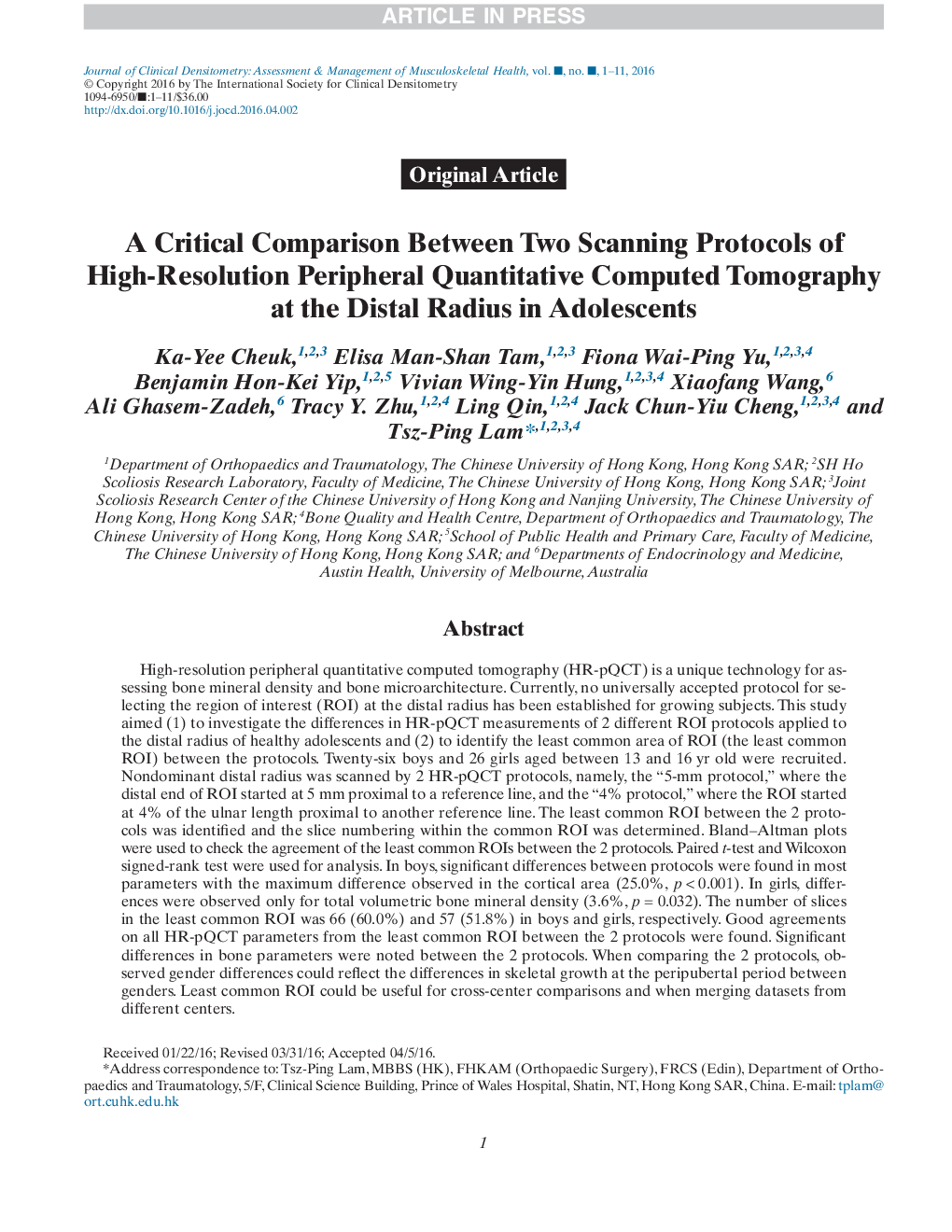| Article ID | Journal | Published Year | Pages | File Type |
|---|---|---|---|---|
| 8723274 | Journal of Clinical Densitometry | 2016 | 11 Pages |
Abstract
High-resolution peripheral quantitative computed tomography (HR-pQCT) is a unique technology for assessing bone mineral density and bone microarchitecture. Currently, no universally accepted protocol for selecting the region of interest (ROI) at the distal radius has been established for growing subjects. This study aimed (1) to investigate the differences in HR-pQCT measurements of 2 different ROI protocols applied to the distal radius of healthy adolescents and (2) to identify the least common area of ROI (the least common ROI) between the protocols. Twenty-six boys and 26 girls aged between 13 and 16âyr old were recruited. Nondominant distal radius was scanned by 2 HR-pQCT protocols, namely, the “5-mm protocol,” where the distal end of ROI started at 5âmm proximal to a reference line, and the “4% protocol,” where the ROI started at 4% of the ulnar length proximal to another reference line. The least common ROI between the 2 protocols was identified and the slice numbering within the common ROI was determined. Bland-Altman plots were used to check the agreement of the least common ROIs between the 2 protocols. Paired t-test and Wilcoxon signed-rank test were used for analysis. In boys, significant differences between protocols were found in most parameters with the maximum difference observed in the cortical area (25.0%, pâ<â0.001). In girls, differences were observed only for total volumetric bone mineral density (3.6%, pâ=â0.032). The number of slices in the least common ROI was 66 (60.0%) and 57 (51.8%) in boys and girls, respectively. Good agreements on all HR-pQCT parameters from the least common ROI between the 2 protocols were found. Significant differences in bone parameters were noted between the 2 protocols. When comparing the 2 protocols, observed gender differences could reflect the differences in skeletal growth at the peripubertal period between genders. Least common ROI could be useful for cross-center comparisons and when merging datasets from different centers.
Keywords
Related Topics
Health Sciences
Medicine and Dentistry
Endocrinology, Diabetes and Metabolism
Authors
Ka-Yee Cheuk, Elisa Man-Shan Tam, Fiona Wai-Ping Yu, Benjamin Hon-Kei Yip, Vivian Wing-Yin Hung, Xiaofang Wang, Ali Ghasem-Zadeh, Tracy Y. Zhu, Ling Qin, Jack Chun-Yiu Cheng, Tsz-Ping Lam,
